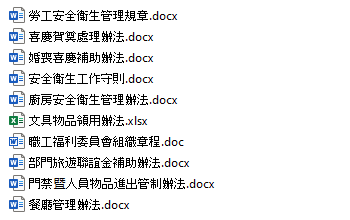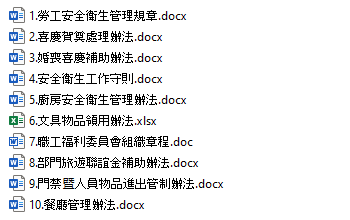ISO 17100:2015 is the first official international standard for translation, built on the basis of the British standard EN 15038. ISO 17100:2015 addresses fundamental aspects of translation project management, including standard recommended steps for the project preparation phase. In this article, we will discuss about ISO recommendations and best practices being applied at AM Vietnam.
"Give me six hours to chop down a tree and I will spend the first four sharpening the axe.""
Abraham Lincoln
Step 1: Collect resources
Like preparing all the ingredients for cooking, this step requires collecting all the resources available which can be helpful in the translation process, including:
- Translation Memory (TM)
Use existing translation memory from related previous projects or create a new one for easy reference later. Using TM also helps with cross-referencing among the involved translators.
- Glossary of terms
Terminology is the essence of translation. A quality translation cannot be without accurate terminology. Terminology management with a common glossary will help the terms to be translated uniformly, take advantage of collective intelligence, and be easily updated.
- Translation guide, style guide
Translation instructions are usually included in the customer’s requests. In addition, the translators can also refer to the guidance of state agencies or international organizations. In the absence of specific guidelines, general standards and conventions in the relevant field will apply.
- References
References need to ensure high reliability. The two most reliable types of documents are (i) documents approved and provided by the client and (ii) legal documents issued by the Government.
Step 2: Prepare content
There are two things to do when preparing content:
2.1 Identify all the content to be translated
Determining the full scope of the content to be translated helps you give an accurate quote, and most importantly, avoids missing translation or over-translation, which could be judged negatively by customers.
Depending on the file format, you will need to pay attention to different sections.
For word files:
- Content in the picture (which cannot be edited)
- Content in the highlighted section
- Content in the attachment (files inserted as objects in a Word document)
Đối với file powerpoint:
- Content in hidden slides/Notes
2.2 Converting content to an editable format
In case the document is a pdf file or an image, you will need to use conversion tools (with OCR feature) to make the content editable.
This is a prerequisite for you to be able to accurately analyze volumes and use CAT tools like Trados and quality control tools like Xbench.
Find out more: Essential tools for translators
Step 3: Analyze project
Project analysis helps the project manager get a detailed and exact view of the project. It includes two main tasks:
- Determine the total volume
Includes total pages, total words, total new words, total repetition words
- Analyze the content of the source language, or analyze the technicality of the document
A document that has many technical terms, or uses a lot of acronyms that only professionals understand will place higher requirements on the translator as well as the effort to translate. Technical factors also affect the cost of the project and the selection of translators involved.
In addition to the three factors mentioned above, AM Vietnam also applies the following two indispensable factors in the preparation of the translation project.
Step 4: Selection of human resources
To improve work efficiency, the principle of “right person, right job” needs to be applied. Translation is a broad industry and covers all fields, so not all translators can translate all types of documents well.
You need to prepare the best plan, including translators with experience and expertise related to the type of document to be translated. Of course, it doesn’t have to be so perfect that a legal document will be translated by a lawyer, or a medical document translated by a doctor!
Step 5: Define implementation strategy
Each project involves a different type of document and has different requirements, so a different approach is required. The same job carried out in different ways will bring different results.
There are projects that can be assigned to 10 translators at the same time, but there are also projects that should only involve 2-3 translators to ensure quality. There are projects that need to be translated first and then formatted later, but there are also projects that need to be well formatted before translating. These are strategic problems that a project manager needs to find the most appropriate solution during project preparation.
Having a clear implementation strategy will help you get the most out of your resources and achieve your project goals in the most efficient way.
Bonus: Tips on effective project preparation
#1. Sequential numbering for multiple files
In English, 2 or more means multiple. This can also apply in translation project management. You don’t have to wait for a project with 100 files to be numbered. Sequential numbering is a simple but effective step.
First, the sequence number will facilitate the communication of information. For example, you can simply say File 1 is being translated, File 2 is being edited. Rather than saying file “name-that-is-too-long” is being translated, the file “name-that-is-complicated” is being edited.
Second, the sequence number helps you avoid the risk of getting confused among files. You will see that the sequence number plays a role with files with long, confusing names, or even using foreign languages such as Chinese, Japanese…


Tip: Use Bulk Rename Utility to easily number multiple files.
#2. Filter duplicate content
For documents that have a lot of duplicate content, or have many parts that have been translated before, the duplicate filtering step will save a lot of effort and time. Obvious benefits:
- Avoid the same content being translated by two or more translators
- Take advantage of the accumulated value of TM
- Eliminate redundant work
- Shorten implementation time
Note: You can apply deep filtering, which also filters out content with less than 100% duplicate content, however, you need to make sure you can complete the sentence and avoid the risk of miss-editing.
#3. Anticipate extra time for finishing multi-page files
Multi-page files here are understood as files of 50 pages or more. Why 50? 50 is the average number to make a file take significantly longer to process than usual.
If you’re a math geek, I can show you a factor that reflects the increase in processing time in terms of pages! However, here I just want you to understand that the time required to complete multi-page files will be much longer than usual.
The reason is very simple, just scrolling up and down to view the contents of a multi-page file takes time. Not to mention, multi-page files can cause lag (slow down) your computer during processing. Imagine, each click takes an extra 10-15 seconds to respond!
Therefore, it is important that you allow extra time for the finalization of such files.
For example, a normal file of ~10 pages after translation + proofreading will only need ~10 minutes to finalize, while a file of ~100 pages will need 4 hours, which is nearly twice as much as usual.
If this extra time is not taken into account, it is easy to be subjective in resource allocation and schedule estimation. The risk of missing the deadline will be very high!
#4 Avoid translating files with bad format
Bad format files are usually those that are converted back from pdf or image to word format. In these files, sentences are often broken into multiple lines and tables often lose its standard structure.
In fact, because of the urgency, translators tend to use these files for translation. Although it saves time at first, you will need to spend more time both during translation and when completing the file.
Therefore, even if you do not have a standard document to translate right away, you need to perform a basic format to ensure that at least the content to be translated is not missed and the sentences are not broken into multiple lines.
So, I just shared about the factors that need to be prepared for a translation project. Hope this article helps you prepare a translation project in the best way.
Find out more:






